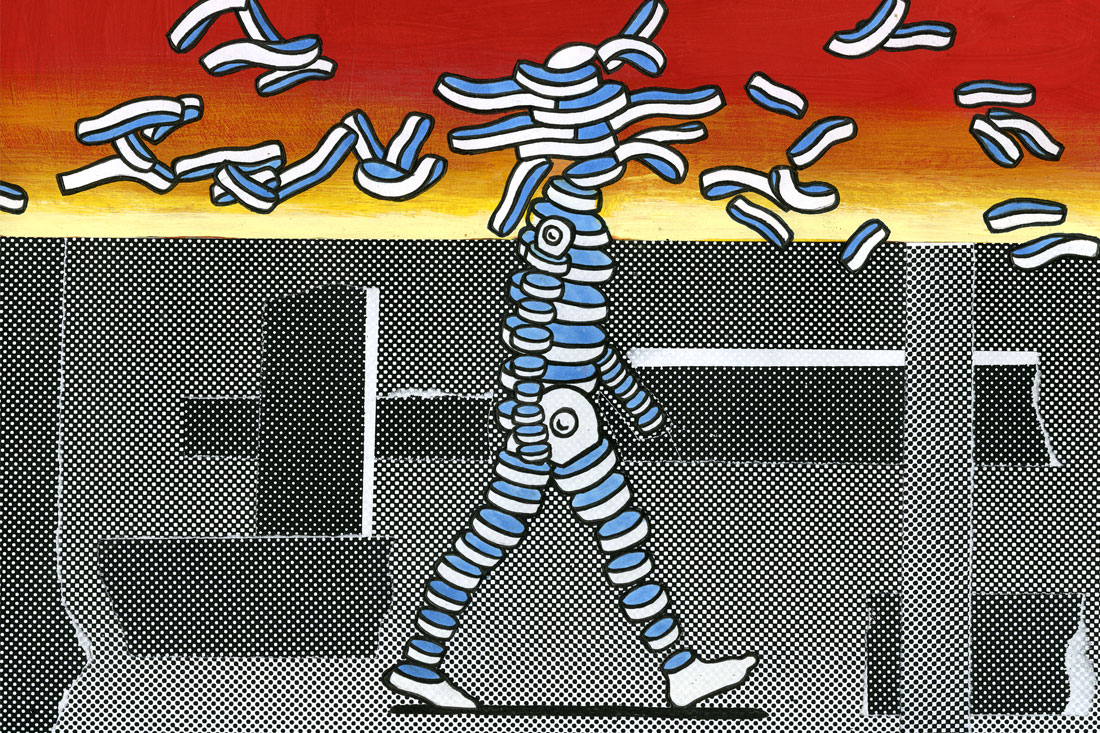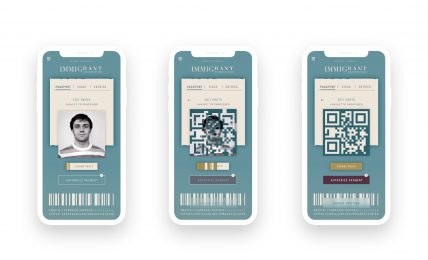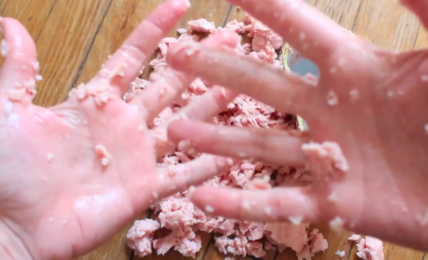Digital America interviewed Adrian Pijoan in November 2023 about their piece Believe in us but not too much (2022).
:::
Digital America: In “Believe in us but not too much” (2022) you emphasize an immersive virtual environment that can be explored through using arrows to go in every direction and through a digital world. Why was it so important for you to create a space that can be explored differently for each viewer?
Adrian Pijoan: I have a huge archive of websites I’ve found that are dedicated to the paranormal that I’ve collected over the past decade. I’d wanted to do something with this archive for several years, and when the opportunity came up to do an exhibition through New Art City I knew that this was the right platform for this material.
Every time I explore this archive it’s a random walk through a maze of hyperlinks. Many of these sites are web 1.0 creations and have dozens of pages of information, hundreds of links, and lots of dead ends in the form of broken links or missing content. I wanted to recreate that experience for the viewer, the feeling of falling deep down the rabbit hole of the paranormal side of the internet. I love this material but also feel a real sense of loss whenever I go through it, because every time there are more sites that have gone offline and can only be partially experienced through WayBack Machine.
I’m happy that I was able to present curated materials from my archive in their natural environment – inside a web browser.
DigA: Exploring the piece, one feature that caught my attention is how I could move through objects in the gallery, such as words and posters, rather than having to go around them. How did this decision come to be and how do you think it affects the users experience in navigating the gallery?
AP: I wasn’t really interested in viewers being able to carefully examine any one piece of ephemera – most of this information is out there if people want to seek it out. I wanted to capture the vibe and emotional experience of feeling lost in the archive, of being up at 3am with a hundred tabs open with a tangle of FOIA documents, stories about Bigfoot, UFO witness drawings, etc. As viewers move through the desert landscape of the exhibition they encounter dense areas of documents and images blowing around in a digital wind. By immersing themselves inside of these freak mini tornadoes of paranormal lore, they can enter into the headspace I was in while creating the work.
The experience is actually pretty linear. I applied principles from video game level design to create the sense of a large open world while naturally guiding viewers through the show.
DigA: Can you talk about why you chose to include a chat box, generated usernames, and an active user list, but keep us from seeing other avatars within the gallery? Perhaps more specifically, what is the role of seeing/not seeing in the piece?
AP: At the time when I created this exhibition that was actually just the way New Art City worked, but I wouldn’t have had it any other way. Even though I use a lot of humor in my work I still believe that experiences with the paranormal are deeply personal. It wouldn’t have been the same if Rainbow Dash and John Wick avatars were dancing around the space. Also, because this show is a love letter to Web 1.0 I didn’t want to buy into the metaverse aesthetics that were trendy at the time.
Throughout the show there are works that are hidden inside of 3D objects, revealing more to the viewer the more they’re willing to explore. This is very much the experience I’ve had with paranormal research. The deeper you go, the more paths and connections are revealed. If I could have structured the show to be an infinite fractal of paranormal information I would have. Maybe next time!
DigA: You highlight the relationship between perception and reality, and how to materialize it. How does this piece express your struggles as an artist between perception and reality? And how has this changed over your career?
AP: Something that is really important to me, and something that I try to convey in all my work is that we should learn to live with paradox; to experiment with belief and with holding seemingly contradictory beliefs in our hearts and minds. I don’t know if “struggle” is the right word, but working with these topics has helped me to experiment with the malleability of both belief and reality. I’m at a point where I can happily live my life with one foot in reality and one foot in the world of dreams, monsters, and strange phenomena – and I wouldn’t have it any other way.
DigA: Your other works, specifically “Dreaming of Alpha Draconis” (2022), you also incorporate paranormal and extraterrestrial activity along with human activity. What’s the inspiration behind this theme in your work?
AP: I’ve been working with paranormal topics for the last decade, but I’ve been interested in them for my entire life. Our stories about mysterious phenomena often expose more about ourselves than anything else – they reveal our hopes, dreams, desires, and fears. Because of this, I’ve also found that aliens, UFOs, chupacabra, mothman, etc. are powerful symbols for exploring a wide variety of themes. They activate something ancient that’s lodged deep inside our brains. Almost anyone you talk to has had an experience they can’t explain, or at least an uncle who swears he saw Bigfoot on the side of a county road in the middle of the night.
DigA: What are you working on now?
AP: I’m currently working on a solo show that will open on January 5th in the Art Vault at Gallery One in Albuquerque. The piece involves an interactive narrative hosted on a City of Albuquerque phone line. When viewers call in they get to interact with a fictional Albuquerque Department of Unexplained Phenomena and experience a story of bizarre moon cycles, UFO sightings, time travel, men in black, interdimensional portals, and other strange phenomena.
I’m honored to announce that this work will be the inaugural exhibition in the City’s new Art Vault space.
:::
Check out Believe in us but not too much by Adrian Pijoan
:::

Adrian Pijoan is a new media artist based in Albuquerque, New Mexico. Adrian received his MFA in art and ecology from the University of New Mexico in 2016. Adrian’s work has been shown in a variety of traditional and nontraditional spaces.



